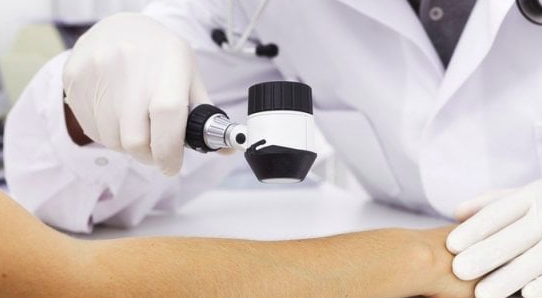The computer beats the man: he recognizes the melanoma with precision

The artificial INTELLIGENCE beats the dermatologist. In the discovery of malignant melanomas, a neural network - a software inspired by the functioning of the human brain - proved to be more skilled than 58 dermatologists from 17 countries. Identifying, starting from 100 images of doubtful cases, a higher percentage of melanomas. This is revealed by a study just published in Annals of Oncology by a team of German, French and American scientists.
· MEN AND COMPUTER
The challenge between dermatologists and artificial intelligence took place in two stages. In the first phase the conditions were absolute parity: both the neural network and the experts had to arrive at a diagnosis starting from only 100 images of suspected melanomas. The result showed the highest precision of the machine: 95% of successes, against 86.6% obtained by dermatologists. In the second phase of the test, in addition to the starting images, dermatologists could also consult clinical information associated with the photos, and enlargements. This made it possible to improve the accuracy of the diagnoses: in fact 88.9% of the melanomas were recognized.
· THE CAPACITY OF DIAGNOSIS
Percentage that, however, is still less than 95% obtained from the computer. «We have trained the neural network by subjecting over 100,000 images of moles and melanomas, together with the correct diagnosis. For each image examined, the system has improved its diagnostic capacity, "explains Holger Haenssle, professor of dermatology at Heiderlberg University and first author of the study. "The neural network has also shown greater specificity, that is, a lower propensity to exchange for harmless melanomas, a mistake that can lead to unnecessary surgical removal operations."
Precision in diagnosis is crucial in a disease like melanoma - 132,000 new cases a year, according to estimates by the World Health Organization - which can be cured if detected in time, but in many cases is diagnosed only when the cancer activity it is advanced and more difficult to treat. «I have been involved in research projects aimed at improving the early detection of melanoma in the last twenty years. When I read recent articles on the abilities of deep-learning neural algorithms to overcome human experts in specific tasks, I immediately understood that we should explore the use of these algorithms for the diagnosis of melanoma, "comments Haenssle.
The study, with the contraposition between men and computers, has a strong symbolic value but also some limits to be taken into account, such as the fact that the doctors knew that their diagnostic decisions were only for an experiment and not to solve life situations or of death for the patient. In the editorial published in Annals of Oncology together with the study, it is emphasized that to date there is not yet an effective substitute for the classic clinical examination. But it is also emphasized that 2D and 3D photography of the body is now able to capture 90% to 95% of the skin surface, and further progress could lead to a fully automatic diagnosis of skin cancers.
It would be interesting to see if there was a concurrence of erroneous diagnoses on a case by case basis and whether doctors tended to fail by erring on the false positive side as opposed to the computer or was it the other way round.